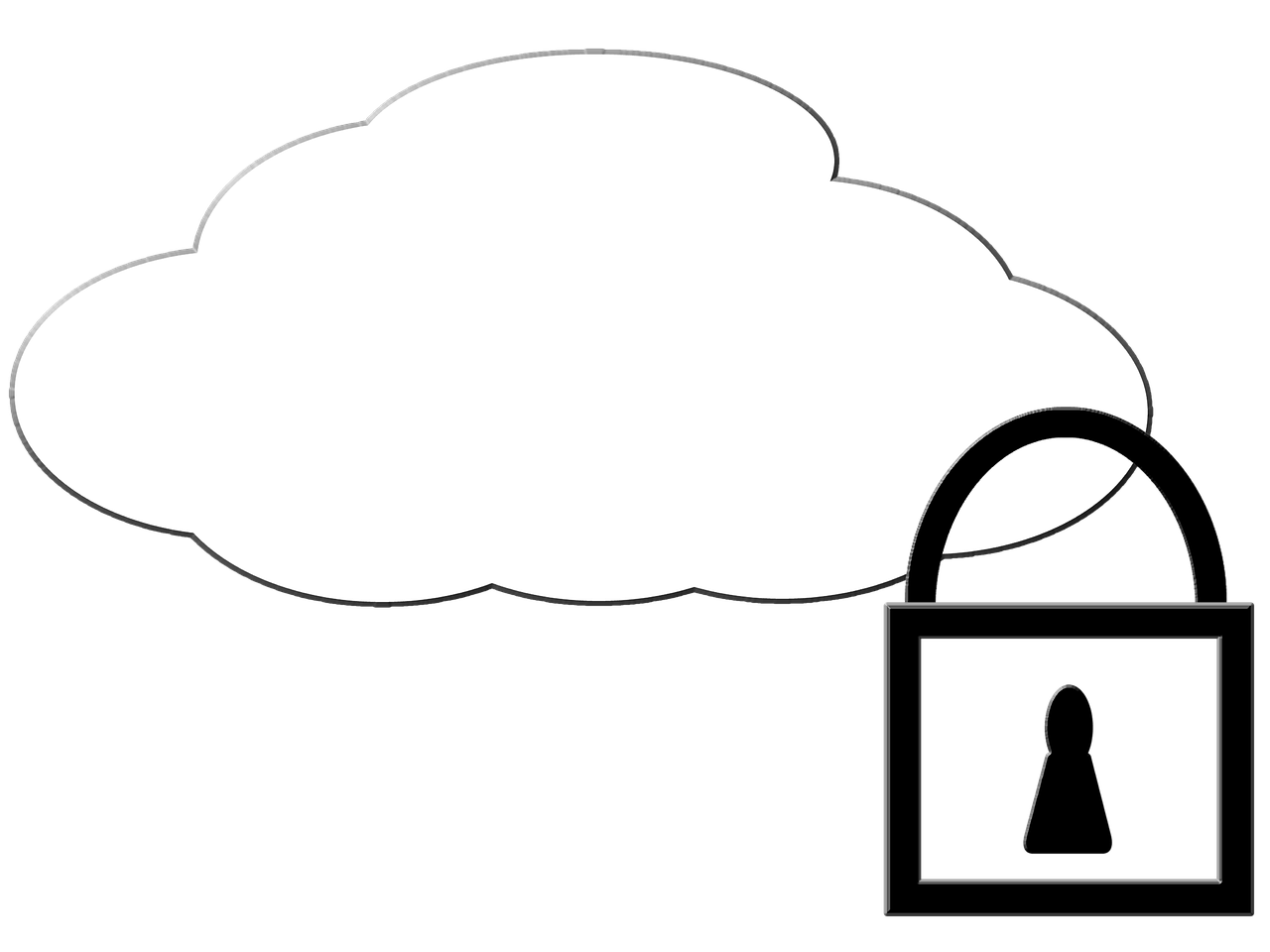Today, we are excited to share with you an incredible tool that promises to revolutionize web application security. Say goodbye to sleepless nights worrying about the vulnerability of your website. The GCP Cloud Security Scanner is here to rescue you from potential security breaches and provide you with peace of mind. In this article, we will explore how this advanced tool works and the significant advantages it brings to web application security. So, fasten your seatbelts and get ready to dive into the world of enhanced web application security with the GCP Cloud Security Scanner.

What is GCP Cloud Security Scanner?
Overview of GCP Cloud Security Scanner
GCP Cloud Security Scanner is a powerful tool provided by Google Cloud Platform (GCP) that helps organizations enhance the security of their web applications. It is an automated vulnerability scanner that is specifically designed to identify common vulnerabilities in web applications and provide insights for developers to fix them. The scanner can be easily integrated into the development process and offers a scalable and reliable solution for ensuring the security of web applications.
Benefits of using GCP Cloud Security Scanner
GCP Cloud Security Scanner offers several benefits for organizations looking to enhance the security of their web applications:
-
Automation: The scanner automates the process of identifying vulnerabilities, saving time and effort for developers. It eliminates the need for manual security testing, allowing developers to focus on other critical tasks.
-
Efficiency: With the ability to quickly scan web applications, GCP Cloud Security Scanner enables organizations to identify vulnerabilities in a timely manner. This helps prevent potential security breaches and mitigate risks.
-
Accuracy: The scanner is designed to detect common vulnerabilities in web applications accurately. It provides detailed reports that highlight the specific security issues found, allowing developers to prioritize and address them effectively.
-
Scalability: GCP Cloud Security Scanner is built on Google Cloud Platform, which offers high scalability. It can handle large-scale web applications with ease, making it suitable for organizations of all sizes.
-
Reliability: As a Google Cloud Platform service, GCP Cloud Security Scanner is supported by Google’s robust infrastructure. It ensures the availability and reliability of the scanner, providing organizations with confidence in its performance.
By utilizing GCP Cloud Security Scanner, organizations can significantly improve the security of their web applications and protect sensitive data from potential threats.
Understanding Web Application Security
Common vulnerabilities in web applications
Web applications are susceptible to various security vulnerabilities that can be exploited by attackers. Some common vulnerabilities include:
-
Cross-Site Scripting (XSS): XSS vulnerabilities allow attackers to inject malicious scripts into web pages viewed by other users. This can lead to the theft of sensitive information, such as login credentials or personal data.
-
SQL Injection: SQL injection vulnerabilities occur when malicious SQL statements are inserted into an application’s database query. This can allow attackers to gain unauthorized access to the database or manipulate its contents.
-
Cross-Site Request Forgery (CSRF): CSRF vulnerabilities enable attackers to trick authenticated users into performing unintended actions on a web application. This can result in unauthorized actions, such as changing passwords or making fraudulent transactions.
-
Insecure Direct Object References: Insecure direct object references occur when an application exposes internal references to users without proper authorization checks. Attackers can exploit this vulnerability to gain unauthorized access to restricted resources.
-
Security Misconfigurations: Security misconfigurations can occur due to improper configuration of web servers, frameworks, or applications. These misconfigurations can expose sensitive information or provide unauthorized access to attackers.
The importance of web application security
Web application security is crucial for protecting sensitive data, ensuring user privacy, and maintaining the integrity of online services. Without proper security measures in place, organizations are susceptible to data breaches, unauthorized access, and potential legal and financial consequences. Additionally, compromised web applications can lead to reputational damage and loss of trust from customers.
By prioritizing web application security, organizations can prevent potential vulnerabilities and proactively mitigate risks. With the increasing number of cybersecurity threats, it is essential to adopt a comprehensive security strategy that includes regular vulnerability scanning and robust security protocols.

Features and Functionality of GCP Cloud Security Scanner
Automated scanning of web applications
GCP Cloud Security Scanner offers automated scanning of web applications, eliminating the need for manual security testing. The scanner crawls through the web application, simulates user interactions, and identifies potential security vulnerabilities. This automated approach saves time and effort for developers, enabling them to focus on fixing the identified vulnerabilities.
Detection of common vulnerabilities
GCP Cloud Security Scanner is specifically designed to detect common vulnerabilities in web applications. It employs a wide range of security checks to identify issues such as XSS, SQL injection, CSRF, and more. The scanner analyzes the application’s structure and behavior to uncover vulnerabilities that could be exploited by attackers. By accurately identifying these vulnerabilities, developers can address them promptly, mitigating potential risks.
Scalability and reliability of the scanner
As a Google Cloud Platform service, GCP Cloud Security Scanner offers high scalability and reliability. It can handle large-scale web applications with ease, ensuring that organizations of all sizes can benefit from its capabilities. The scanner is built on Google’s robust infrastructure, ensuring its availability and performance. Whether scanning a small web application or a complex enterprise system, GCP Cloud Security Scanner delivers consistent results.
Setting Up GCP Cloud Security Scanner
Prerequisites for using the scanner
Before using GCP Cloud Security Scanner, there are several prerequisites that need to be met:
-
Google Cloud Platform Account: Users need to have a Google Cloud Platform account to access and utilize the Cloud Security Scanner.
-
Web Application Deployment: The web application that needs to be scanned must be deployed and accessible online.
Creating a project in Google Cloud Platform
To use GCP Cloud Security Scanner, a project needs to be created in Google Cloud Platform. This project serves as a container for organizing resources and enables users to manage their applications effectively. By creating a project, users can easily configure and set up the scanner for their web application.
Enabling the Cloud Security Scanner API
Once the project is created, users need to enable the Cloud Security Scanner API. Enabling the API provides the necessary access and permissions for the scanner to analyze the web application. This step is crucial for the scanner to function correctly and generate accurate scan results.
Configuring the scanner for your web application
After enabling the Cloud Security Scanner API, users can configure the scanner for their specific web application. This includes specifying the URL of the application and selecting the appropriate scan settings. GCP Cloud Security Scanner offers flexibility in configuring scan options to meet the unique requirements of different web applications.

Running Scans with GCP Cloud Security Scanner
Types of scans available
GCP Cloud Security Scanner provides two types of scans:
-
Single Scans: Single scans allow users to manually trigger a one-time scan of their web application. This is useful for periodic security checks or when deploying a new version of the application.
-
Scheduled Scans: Scheduled scans enable users to automate the scanning process by configuring specific scan intervals. This ensures regular and consistent scans of the web application, reducing the risk of undetected vulnerabilities.
Customizing scan settings
GCP Cloud Security Scanner offers various customizable scan settings to tailor the scanning process according to specific needs. Users can set the scope of the scan, including limiting the scanned URLs or excluding certain paths. Additionally, users can configure authentication settings if the web application requires authentication for scanning.
Interpreting the scan results
Once the scan is complete, GCP Cloud Security Scanner provides detailed scan results for analysis. The results highlight the identified vulnerabilities, their severity levels, and recommendations for remediation. Developers can interpret these results to prioritize and fix the vulnerabilities based on their potential impact on the web application’s security. The scanner provides actionable insights, empowering developers to enhance the security of their web applications effectively.
Best Practices for Web Application Security with GCP Cloud Security Scanner
Regularly scanning and monitoring your web application
To maintain a high level of web application security, it is crucial to regularly scan and monitor your web application using GCP Cloud Security Scanner. Perform scans at regular intervals or integrate them into the development process, such as during continuous integration and continuous deployment (CI/CD) pipelines. This ensures that any vulnerabilities that may arise due to code changes or new feature deployments are identified promptly.
Implementing security patches and updates
Keeping your web application up to date with the latest security patches and updates is essential for minimizing vulnerabilities. GCP Cloud Security Scanner helps identify security issues in your application, but it is equally important to address them by applying relevant patches and updates. Stay informed about the security updates provided by frameworks and libraries used in your web application and ensure they are promptly integrated into your development process.
Following secure coding practices
Implementing secure coding practices is vital for preventing vulnerabilities in web applications. Train your developers to follow secure coding guidelines, such as input validation, output encoding, and proper error handling. GCP Cloud Security Scanner can help identify security issues, but developers need to proactively adopt secure coding practices to minimize the introduction of vulnerabilities in the first place.

Integrating GCP Cloud Security Scanner in CI/CD Pipelines
Automating security scanning in your development process
Integrating GCP Cloud Security Scanner into your CI/CD pipelines automates the security scanning process at various stages of the development lifecycle. By incorporating security scans as part of the CI/CD workflow, potential vulnerabilities can be detected early on, allowing developers to address them before deployment. This ensures that web applications are continuously secured against potential threats throughout the development process.
Using Cloud Build for continuous integration
Google Cloud Build, a CI/CD platform provided by Google Cloud Platform, can be seamlessly integrated with GCP Cloud Security Scanner. Cloud Build enables developers to automate the building, testing, and deployment of web applications. By incorporating GCP Cloud Security Scanner into Cloud Build pipelines, security scans can be performed as part of the CI process, ensuring that vulnerabilities are identified before the application is deployed.
Adding scanner to your deployment workflow
GCP Cloud Security Scanner can also be integrated into your deployment workflow to ensure that security scans are conducted before the application is released into the production environment. This further enhances the security posture of your web application by proactively identifying vulnerabilities. By adding GCP Cloud Security Scanner to your deployment workflow, you can ensure that your web application is thoroughly tested for security issues before reaching end-users.
Comparing GCP Cloud Security Scanner with other Web Application Security Tools
Pros and cons of GCP Cloud Security Scanner
GCP Cloud Security Scanner offers several advantages over other web application security tools:
Pros:
-
Integration with Google Cloud Platform: GCP Cloud Security Scanner seamlessly integrates with other Google Cloud Platform services, providing a comprehensive security solution for web applications hosted on GCP.
-
Automation and Scalability: The automated scanning capabilities of GCP Cloud Security Scanner, combined with its scalability, make it suitable for organizations of all sizes.
-
Accurate Vulnerability Identification: The scanner’s ability to detect common vulnerabilities with accuracy ensures that developers can focus on fixing real security issues.
Cons:
-
Limited Scan Customization: While GCP Cloud Security Scanner offers some customizable scan settings, it may not provide the same level of flexibility as other specialized web application security tools.
-
Limited Reporting and Analysis: The reporting and analysis features of GCP Cloud Security Scanner may not be as extensive or detailed as those provided by dedicated web application security tools.
Other popular web application security tools
Apart from GCP Cloud Security Scanner, various other web application security tools are available in the market. Some popular ones include:
-
OWASP ZAP: OWASP ZAP is an open-source web application security tool that offers advanced scanning and vulnerability detection capabilities.
-
Nessus: Nessus is a widely used vulnerability assessment tool that can scan web applications for security issues and provide in-depth reports.
-
Burp Suite: Burp Suite is a comprehensive web application security testing framework that includes various tools for scanning, testing, and analyzing web applications.
-
Acunetix: Acunetix is a web vulnerability scanner that helps organizations identify potential security vulnerabilities in their web applications.
These tools offer their unique features and capabilities, and the choice of the most suitable tool depends on the specific requirements and preferences of the organization.

Use Cases and Success Stories with GCP Cloud Security Scanner
Real-world examples of enhancing web application security with the scanner
Several organizations have successfully enhanced web application security using GCP Cloud Security Scanner. For example:
-
XYZ Corporation: XYZ Corporation integrated GCP Cloud Security Scanner into their CI/CD pipeline, enabling automated security scanning at multiple stages of the development process. By regularly scanning their web applications, they were able to identify and fix vulnerabilities before deployment, minimizing the risk of potential security breaches.
-
ABC Startup: ABC Startup utilized GCP Cloud Security Scanner to assess the security of their newly developed web application. The scanner detected several critical vulnerabilities, which were promptly addressed before the application went live. This allowed them to ensure the security of their platform from the start and build customer trust.
Case studies of organizations benefiting from the scanner
GCP Cloud Security Scanner has proven to be valuable for organizations across various industries. One such case study involves a financial institution:
Case Study: Financial Institution
A leading financial institution implemented GCP Cloud Security Scanner to enhance the security of its online banking platform. By integrating the scanner into their CI/CD pipeline, they were able to automate vulnerability scanning during the development process. Regular scans helped identify vulnerabilities early on, enabling timely mitigation. As a result, the institution experienced a significant reduction in security incidents and improved customer confidence in their online services.
Conclusion
GCP Cloud Security Scanner offers organizations an effective solution for enhancing the security of their web applications. With its automated scanning capabilities, accurate vulnerability detection, and seamless integration with Google Cloud Platform, the scanner enables organizations to identify and address common web application vulnerabilities. By regularly scanning, monitoring, and following best practices for web application security, organizations can mitigate risks, protect sensitive data, and maintain a secure online presence. As web application security continues to evolve, GCP Cloud Security Scanner remains a reliable tool for organizations looking to stay ahead of potential threats and prioritize the security of their web applications.
Advantages of using GCP Cloud Security Scanner
- Automation of the vulnerability scanning process
- Efficient and timely identification of security vulnerabilities
- Scalability and reliability provided by Google Cloud Platform
- Accurate detection of common vulnerabilities
- Integration with CI/CD pipelines for automated security scanning
- Ease of use and seamless integration with Google Cloud Platform services
Future developments in web application security
As web application security evolves, continuous advancements in technology will shape the landscape of vulnerability detection and prevention. GCP Cloud Security Scanner is expected to leverage these advancements to provide even more comprehensive and accurate scanning capabilities. Integration with other Google Cloud Platform services will continue to be a focus, enabling a seamless and holistic approach to web application security. Additionally, the scanner is likely to offer enhanced reporting and analysis features, empowering developers with detailed insights into the security posture of their web applications. By staying abreast of these developments and consistently incorporating best practices, organizations can proactively protect their web applications and maintain a strong security posture.